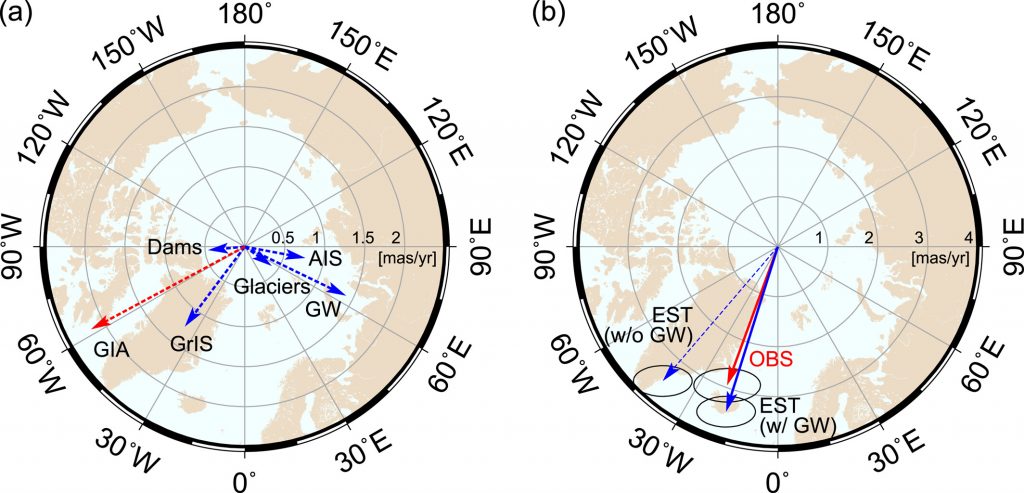As we gear up for our yearly fundraiser, I feel confident in saying that just about everyone on our team is wishing we could somehow cram more hours into every day. At a certain level, our world is happy to oblige, and every year our days get the smallest fraction of a second longer and the Moon gets a few centimeters farther away.

In science, we often find things related in the wildest of ways. In this case, conservation of momentum is trying to keep everything rotating with the same amount of energy: we have the Earth rotating about its axis, the moon rotating and revolving around the Earth, and the Earth and Moon going round and round the Sun. All things being constant, everything would stay exactly the same forever, but… things aren’t constant. Because our Earth isn’t perfectly spherical, the Moon’s gravity is pulling on mountains and others high-mass points a little bit harder, and in the process slowing our world’s rotation. As the Earth slows, the Moon moves outward. This is the same physics that describes how an ice skater can slow down by flinging their arms outward.
In this simple situation, everyday from here forward will get a little bit longer, and everyday — looking back through history — we thought the days would be getting a little bit shorter.
But the universe and our planet are rarely simple, and it turns out that our moon isn’t the only thing affecting our world. Our Sun also affects the Earth, and it has the ability to speed things up.
And new research shows that when the Earth’s day is about 19 hours long, the Moon’s habit of lengthening the day and the Sun’s efforts to shorten the day almost balance out.
According to a new paper by Ross N. Mitchell & Uwe Kirscher appearing in Nature Geoscience, fossil records indicate that from about 1 billion years ago to about 2 billion years ago, our Earth’s rotation rate stalled out at about 19 hours. During this time, evolution also stalled out in its own way: Photosynthetic bacteria weren’t able to create the oxygen-rich atmosphere we enjoy until the days grew longer.

This means, life as we know it actually requires longer days. As we go looking for life elsewhere among the stars, it looks like there will be a sweet spot where worlds rotate fast enough to maintain even heating and decent weather, and slow enough to maintain photosynthesis — a sweet spot where life may thrive just a bit easier.
Lots of different things can affect the Earth’s rotation. Our world really is a really big version of a spinning ice skater, and just as every tilt of the head and movement of the hand will change the ice skater’s rotation, every change in the distribution of land and sea can change the Earth’s rotation.
We hear about these changes on the news when big things happen like the filling of the Three-Gorges Dam in China, which slowed our planet by 0.6 s.
What we sometimes miss is how small things can build up to also change things.
In a new paper in Geophysical Research Letters, researchers led by Ki-Weon Seo document how the pumping of groundwater changed our planet’s rotation — and tilt!
It’s estimated that 2,150 billion tons of groundwater was pumped out of the landscape between 1993 and 2010. This is enough water to raise sea labels by 6 mm or about ¼ of an inch.
This redistribution of mass has moved the Earth’s rotation axis about 80 cm, and will continue to change our planet as we continue to pump water, use it in our homes and businesses, and send it back into the environment.

According to Seo, “Observing changes in Earth’s rotational pole is useful for understanding continent-scale water storage variations. Polar motion data are available from as early as the late 19th century. So, we can potentially use those data to understand continental water storage variations during the last 100 years. Were there any hydrological regime changes resulting from the warming climate? Polar motion could hold the answer.”
This kind of research really shows how everything is connected, from household water pumps to the Sun’s push and pull on the Earth, everything plays a role in our planet’s evolution.


